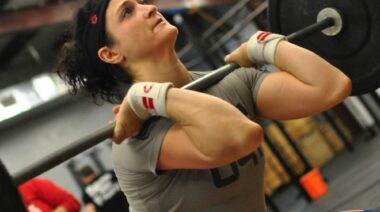Egg shopping used to be simple—white eggs or brown eggs. End of story.
(To which the answer was a no-brainer for yolk-lovers. We always flock to brown eggs because their yolks just always seem a bit richer, don’t they?)
Egg shopping used to be simple—white eggs or brown eggs. End of story.
(To which the answer was a no-brainer for yolk-lovers. We always flock to brown eggs because their yolks just always seem a bit richer, don’t they?)
Fun fact in case you missed it—the only difference between brown and white eggs are that brown eggs come from chickens with brown feathers and white eggs come from chickens with white feathers. Other than that, their nutritional makeup is identical: 6 grams of protein, 5 grams of fat, 5 percent of your daily vitamin A needs, and 10 percent of your vitamin D needs.
But egg shopping today, however, isn’t so easy or straightforward.
The Trouble With Eggs
You stand at the egg fridge at your grocery and see white eggs, brown eggs, free-range eggs, organic free-range eggs, cage-free eggs, Omega-3 fortified eggs, antibiotic-free eggs, pasture-raised eggs, and on and on—your confusion builds.
Something tells you you should avoid the cheap large, white eggs for $2.99 for a dozen so you go for the middle-priced brown, free-range eggs for $4.50 because they seem to offer something more, you think. You’re not sure why, but you remember hearing brown eggs are healthier than white.
But is this enough?
Should you be spending $7.99 a dozen for the certified organic, cage-free, pasture-raised eggs without antibiotics that have been pumped with Omega-3 fatty acids?
Total. Mind. F**k. Right?
Let’s get to the bottom of all this egg confusion. What do the labels really mean? And do they matter?
You’re going to hate me for this answer: It depends.
It depends on your priorities and it depends on where you live: The US versus Canada, for example.
Let’s consider three priorities below.
Egg Guideline 1: Hen Happiness
In the US, the reality is that the majority of egg-laying hens live in close quarters in cages barely big enough for them to fully stretch their wings.
So, if this tugs at your heartstrings, then cage-free is probably for you because at least it tells you the chickens have enough space to move around. That is, however, pretty much all it tells you. Free-range eggs tell a similar tale. The hens get to go outside and run around and do their natural hen-like activities.
In Canada, on the other hand, there are different housing options for the hens.
- Conventional housing – Hens live in small groups in cages. Like the US, this is the most common method used by egg farmers. In fact, as many as 90 percent of eggs in Canada are produced this way in cages.
- “Enriched housing” – Hens live in cages of varying sizes and they’re able to lay their eggs in a nesting area with easy access to food and water.
- Free-run housing – Hens roam a bit more freely, but are still kept in a barn. They also have bedding areas and nesting areas for egg-laying.
- Free-range housing – Similar to free-run except the hens also have access to an outside space, depending on the weather.
Egg Guideline 2: Your Own Health
You have been told you need more Omega-3 fatty acids because it helps with recovery, inflammation, reduces heart disease, etc. You don’t eat much fish and you dislike the fishy burps you produce after taking a fish oil supplement. If this is you, then Omega-3 eggs might be the eggs for you, as they have been pumped with Omega-3 (mostly DHA) fatty acids.
If the non-GMO thing is your priority, then organic eggs might be for you—this is exactly what that designation tells you. As for pasture-raised, this tells you the farm has been certified by a third-party, such as the Certified Humane Program (at least this is what it means in the US).
The True Gold Standard
The shortcoming with all of the above labels (cage-free, free-range, free-run, Omega-3, organic, and pasture-raised) is there are still many unknowns, such as what the hens were fed.
Thus, the gold standard, so to speak, if you live in the United States is USDA certified organic—meaning the hens were raised following an agreed-upon standard of practice. The USDA certified organic label also guarantees the eggs were produced without pesticides or fertilizers and that the hens were fed an organic diet free from animal by-products or antibiotics.
In Canada, hens are very rarely fed antibiotics unless they’re sick, so it’s less of a concern than it is in the United States.
The Egg Takeaway
Navigating egg best practices is tricky at the best of times. Some great advice a friend gave me a while back: Get to know a local farmer (I found one at a local farmer’s market) and check out their farm in person.
Even though most hens are housed in cages, there are many that aren’t, and if you’re a 4-eggs-a-day kind of person like me, it’s worth investing the time to find an egg source you’re happy with.
Related: The Great Egg Debate: Why You Should Eat Eggs, Why You Shouldn’t Not Eat Eggs






